Pre-school, kindergarten, and first grades are the critical years for forming the basic motor habits of starting letters at the top, and going the correct direction.
You may be thinking, “What difference does it make where the letter starts as long it it looks right?”
That line of thought has a certain limited truth to it: if a letter is drawn well it can be read. But as children mature they stop drawing [focus on the forming of one letter at a time] and start automatically making letters.
|
|
Automatic ‘a’ and ‘d’s. These formations are all made with incorrect direction of movement. |
||||||
|
|
|
These are samples of a 4th grader’s writing who could draw out single letters but as soon as he started thinking about what he wanted to write, the automatic patterns greatly interfere with legibility.
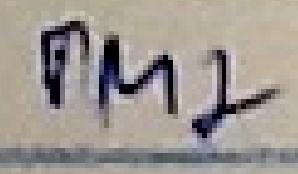 |
| ‘and’ |
Changing motor habits is an extremely difficult thing to do. I do my best to advocate for quality handwriting instruction and sufficient opportunities to practice conventional formations.
|
|
||||
|
|
What can I do to instill conventional formations in my student’s everyday writing?
The truth is quality practice is what counts. Kindergarten and first-grade children need to print letters with conventional formations over, and over, and over again, until conventional formations become a habit. If you have a way to make sure that happens within the structure of your classroom great!
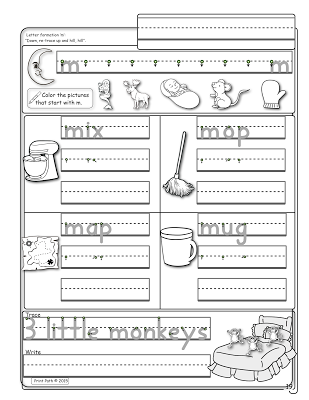 I am excited to launch a new product designed to remind and reinforce conventional formations for kindergarten age children. The teachers I have shared this with are very enthusiastic because the emphasis is on Common Core Standards and with handwriting woven in.
I am excited to launch a new product designed to remind and reinforce conventional formations for kindergarten age children. The teachers I have shared this with are very enthusiastic because the emphasis is on Common Core Standards and with handwriting woven in. 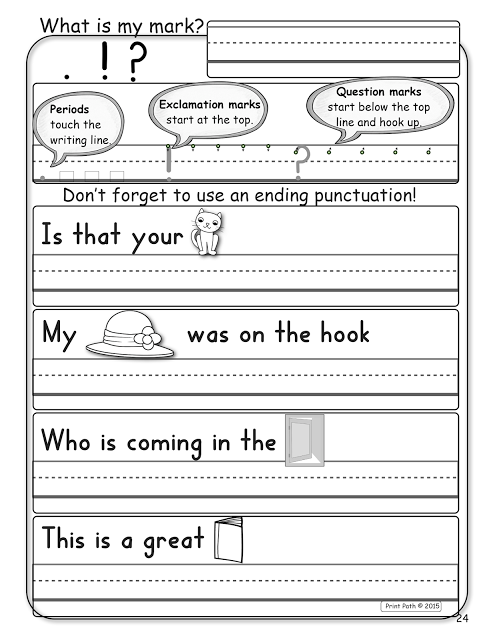
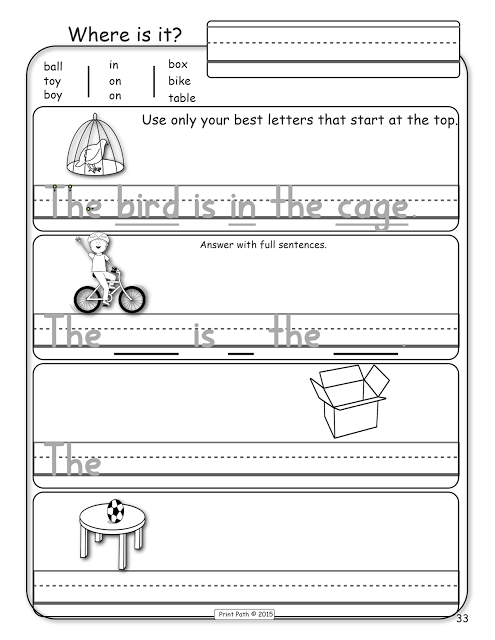 Handwriting Meets the Common Core is aligned with the standards that are expected for Kindergarten while embedded cues and prompts remind children to use and practice conventional letter formations. 50 No-Prep pages of worksheets for fun and engaging daily work:
Handwriting Meets the Common Core is aligned with the standards that are expected for Kindergarten while embedded cues and prompts remind children to use and practice conventional letter formations. 50 No-Prep pages of worksheets for fun and engaging daily work:
• Short, one-line review of letter formations with path of movement language [26 pages]
• Given picture cues children identify initial sounds, spell cvc-cvcc-long vowel words, and write sight word sentences [26 pages]
• Indicate initial sounds of rhyming words [4 pages]
• Identify short vowel sounds in the medial position [6 pages]
• Identify final sound of CVC words [2 pages]
• Use singular or plural [2 pages]
• Identify, label, and draw emotions [1 page]
• Identify and write number words [2 pages]
• Generate simple sentences with previously practiced nouns [7 pages]
• Categorize and write labels for common objects [2 pages]
• Conventions: capitalize at start of sentences and proper nouns, spaces between words, and determine ending punctuation [2 pages]
• Identify and use prepositions [2 pages]
• Generate declarative sentences about favorites, sequence favorites, provide reasoning, and use adjectives [3 pages]
• Convert verbs from present tense to present participle by adding ‘ing’ [1 page]
• Answering ‘wh’ questions – who, what, & where [4 pages]
![]()
Check out what my friend’s at Teacher Talk are writing about!

An InLinkz Link-up
[inlinkz_linkup id=597550 mode=1]
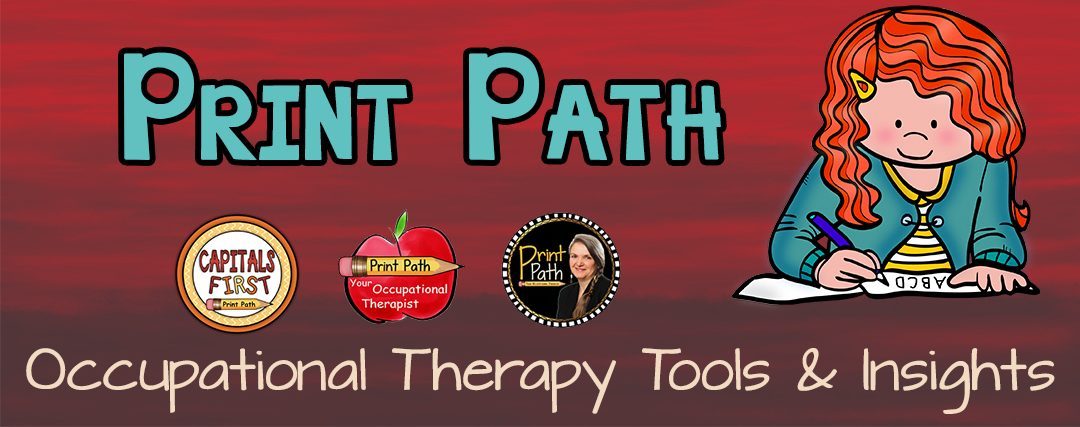
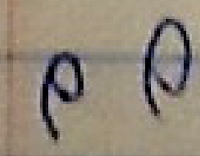









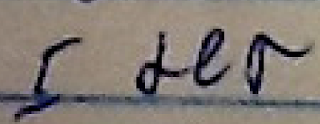
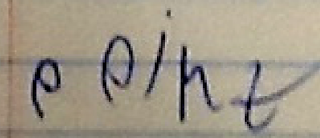
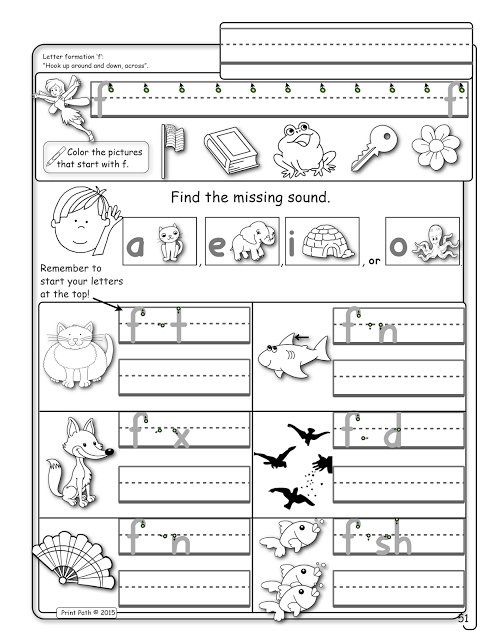
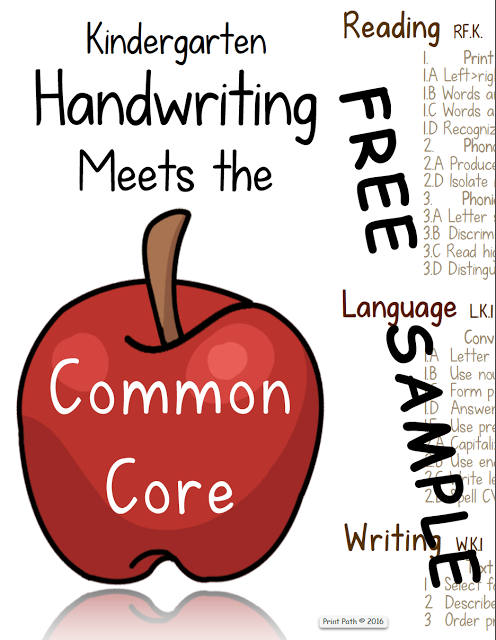
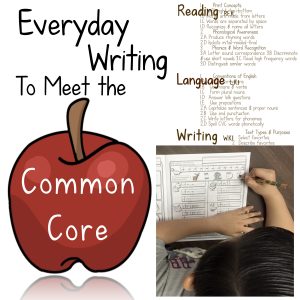
Really interesting post! Thanks for the info. and the free sample! It's always nice to be able to try it out before buying! Thanks!
Handwriting is so important. Thanks so much for sharing this.
Thank you for sharing. Writing is very important.
I think handwriting is a lost art. So many of us accept anything and then struggle to decipher it! Thanks for your hard work on this!